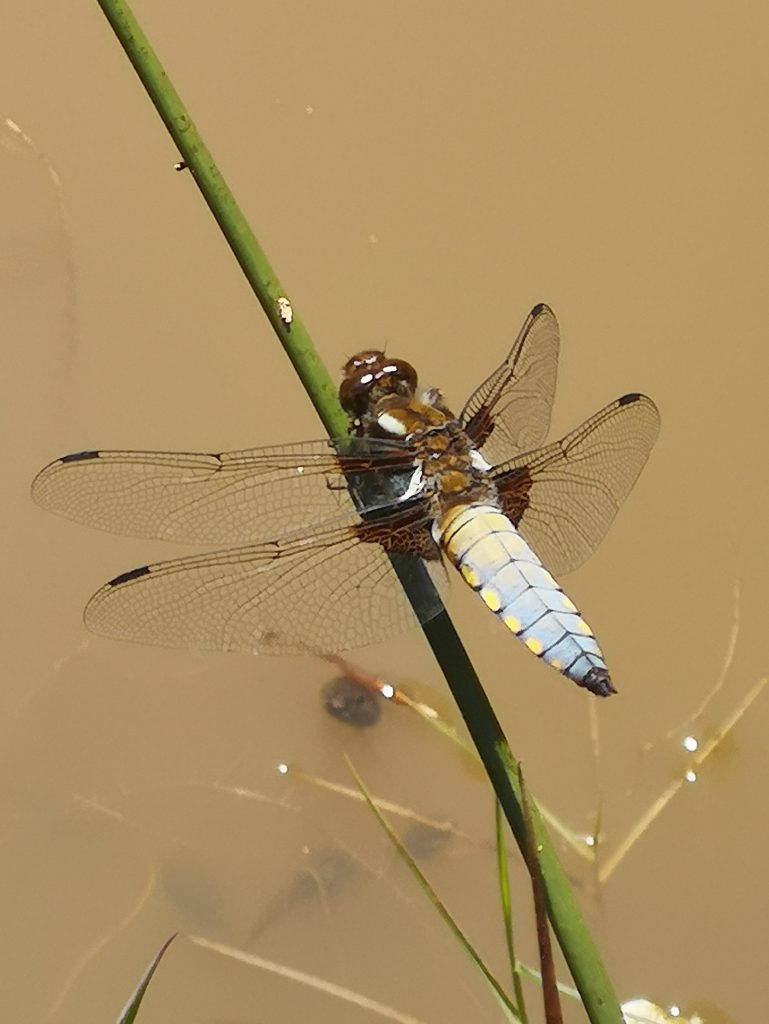The Broad-Bodied Chaser
Our species and plans (7)
The Broad-Bodied Chaser Libellula depress.
Status: fairly common in southern Britain, occasional migrant.
Description: A medium sized dragonfly seen in early summer. This species are generally the first dragonflies to colonise newly established ponds and establish their territories. Both sexes have brown eyes and thorax. They are easily identified by having a short, very broad, flat abdomen with yellow edges to s3-8.
Male: Its abdomen is powder blue and complete as an adult. Juvenile males have a yellow area s2 to s4 but this changes to blue quite quickly. The yellow markings on the outer edge of the abdomen can fade to dark patches during mating due to a abrading.

Female: Abdomen broader than the male and yellowish brown in colour. Yellow markings on the outer edge of abdomen also larger than that of the males.
Statistics: overall length 39-48mm, hindwing: 33-37mm. Most commonly seen in May, June and July.
Behaviour : Males aggressively defend their territories perching on nearby vegetation at between knee and waist height. A fast and erratic flying dragonfly. Females lay their eggs on the wing by flicking to top of her abdomen into the water.

Habitat: This dragonfly prefers small standing water bodies such as ponds, small lakes and ditches. Uncommon on more acidic sites although our plot in South Devon is neutral to slightly acidic. Widespread over much of England and Wales, except in the far north although some have been recorded in Southern Scotland. It benefits from newly created ponds and will quickly re-colonise neglected bodies of water after being dredged.

Similar species: Scarce Chaser which also has a blue abdomen but it is much thinner. Black Tailed skimmer but again has a much narrower abdomen and does not have the four dark areas on the wings next to thorax and s1.
Our plans: our plans will be to maintain the three small ponds that we have within our woodland by assisting with water levels as they are totally reliant on rainfall. Keeping the pond side vegetation under control, i.e cutting back in the winter months.



